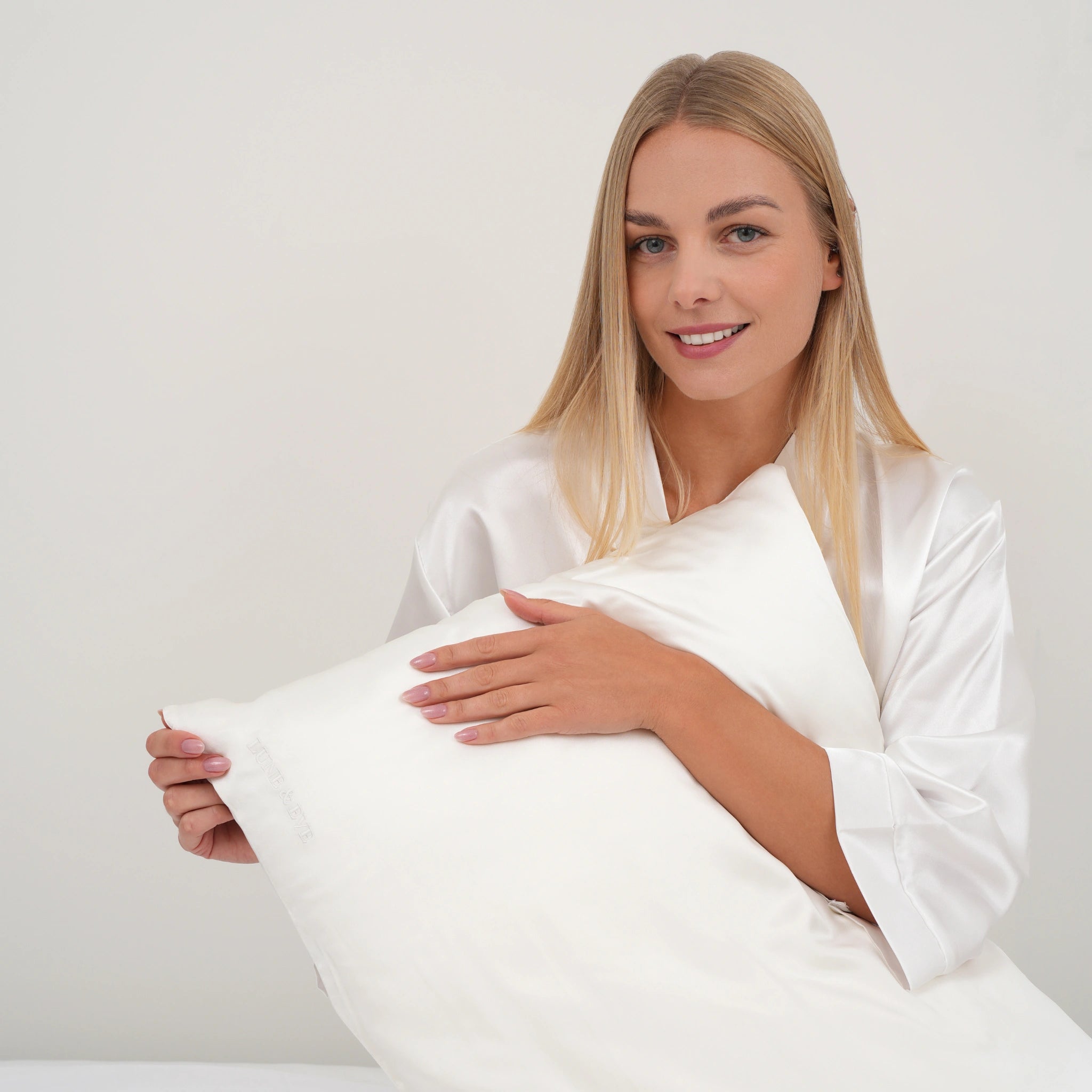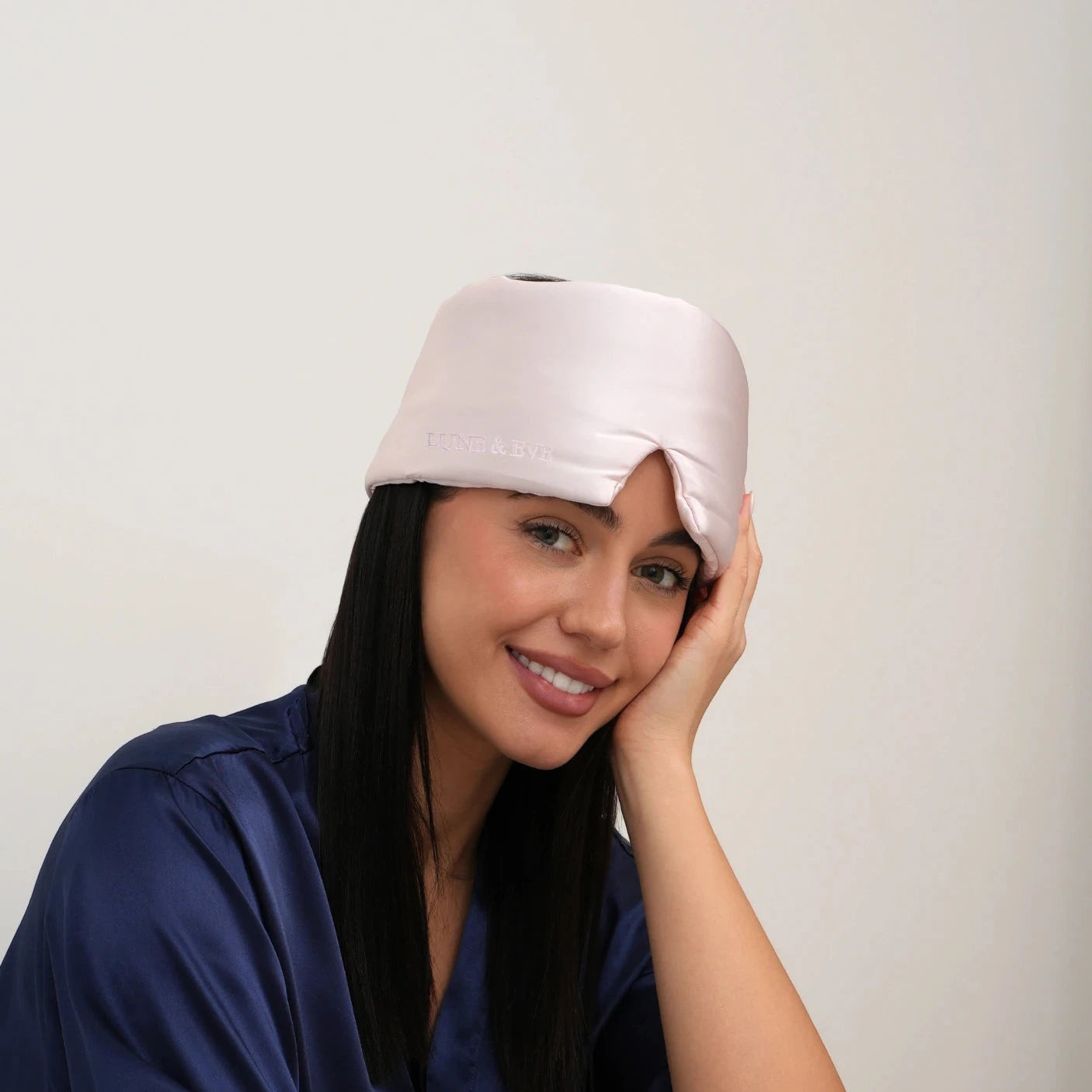You've made the commitment to premium silk sleep accessories, recognizing their transformative benefits for your skin, hair, and overall sleep quality. Now comes the crucial question: How do you maintain these benefits while protecting your investment? Proper silk care isn't complicated, but it does require understanding the unique properties of this natural fiber and the specific requirements of antibacterial silk technology.
Many silk owners unknowingly compromise their accessories' effectiveness and longevity through improper care. The good news is that with the right approach, quality silk accessories can maintain their benefits and beauty for years, making them an excellent long-term investment in your sleep and beauty routine.
Understanding Your Silk: The Foundation of Proper Care
Silk is a natural protein fiber with unique properties that differentiate it from synthetic materials and plant-based fabrics. Understanding these characteristics helps you provide optimal care:
Protein Structure: Silk fibers are composed of proteins similar to those in human hair and skin, making them naturally compatible with your body but also requiring specific care considerations.
Natural pH: Silk maintains a neutral pH that supports skin health, but harsh detergents can alter this balance.
Moisture Sensitivity: While silk regulates moisture beautifully, excessive water exposure during washing can weaken fibers if not handled properly.
Antibacterial Integration: Lune & Eve's silver ion technology is permanently integrated into the silk fibers, but proper care ensures this technology remains effective throughout the product's lifetime.
The Science of Silver Ion Technology Care
The silver ion technology in Lune & Eve silk requires specific care considerations to maintain its 99.7% antibacterial effectiveness:
Permanent Integration: Unlike surface treatments that wash away, silver ions are embedded within the silk fibers during production, making them durable but not indestructible.
Chemical Sensitivity: Certain cleaning agents can interfere with silver ion activity, making detergent selection crucial.
Temperature Considerations: Excessive heat can affect both silk proteins and silver ion distribution.
pH Requirements: Maintaining proper pH levels during washing preserves both silk integrity and antimicrobial function.
Daily Care Practices: Maintaining Freshness
Rotation System: Use multiple silk accessories in rotation to allow proper airing between uses. This prevents moisture buildup and extends the time between washings, preserving fiber integrity.
Proper Storage: Store silk accessories in breathable containers or bags that allow air circulation. Avoid plastic bags that can trap moisture and create conditions for damage.
Spot Cleaning: Address minor stains immediately with cool water and gentle pressure. Prompt attention prevents stains from setting and reduces the need for intensive washing.
Air Circulation: Allow silk accessories to air briefly each morning before storage. This natural airing process helps maintain freshness and prevents moisture accumulation.
The Washing Process: Step-by-Step Excellence
Frequency Guidelines:
- Pillowcases: Every 3-4 uses or weekly
- Sleep masks: Every 5-7 uses or bi-weekly
- Hair accessories: As needed based on product usage
Pre-Wash Preparation:
- Check for stains and pre-treat if necessary
- Turn items inside out to protect the surface
- Use cool water for pre-treatment
- Never use bleach or harsh stain removers
Washing Method:
Hand Washing (Preferred):
- Fill a clean basin with cool water (68-75°F/20-24°C)
- Add silk-specific detergent (1 teaspoon per quart of water)
- Gently agitate water to distribute detergent
- Submerge silk items and gently move through water
- Soak for 3-5 minutes maximum
- Rinse thoroughly with cool water until no detergent remains
- Gently squeeze (never wring) to remove excess water
Machine Washing (When Necessary):
- Use delicate/silk cycle with cold water only
- Place items in mesh laundry bag for protection
- Use silk-specific detergent in the smallest recommended amount
- Select shortest wash cycle available
- Ensure spin cycle is gentle or disabled
- Remove immediately after cycle completion
Detergent Selection: What Works and What Damages
Recommended Detergents:
- Silk-specific formulations designed for protein fibers
- pH-neutral detergents without optical brighteners
- Gentle, concentrated formulas requiring minimal amounts
Ingredients to Avoid:
- Bleach or bleaching agents (damage protein fibers)
- Optical brighteners (can affect silver ion activity)
- Fabric softeners (coat fibers and reduce breathability)
- Enzymes (break down protein structure)
- High alkaline formulations (disrupt natural pH balance)
Drying: Preserving Structure and Function
Immediate Post-Wash Care:
- Gently squeeze out excess water (never wring or twist)
- Roll in clean, dry towel to absorb additional moisture
- Reshape items while damp to maintain proper form
Drying Methods:
Air Drying (Always Preferred):
- Lay flat on clean, dry towel away from direct sunlight
- Turn items periodically for even drying
- Ensure good air circulation around items
- Avoid hanging, which can stretch wet silk fibers
Things to Never Do:
- Machine dry (heat damage is irreversible)
- Hang wet silk items (causes stretching and distortion)
- Expose to direct sunlight during drying
- Use heating devices to accelerate drying
Stain Treatment: Immediate Response Protocol
Oil-Based Stains (makeup, skincare products):
- Blot immediately with clean, dry cloth
- Apply small amount of silk detergent directly to stain
- Work gently with cool water using circular motions
- Rinse thoroughly and wash as normal
Water-Based Stains (sweat, beverages):
- Rinse immediately with cool water
- Apply silk detergent if stain persists
- Allow brief contact time (1-2 minutes)
- Rinse thoroughly and proceed with normal washing
Protein-Based Stains (blood, perspiration):
- Rinse with cool water immediately (hot water sets protein stains)
- Create paste with silk detergent and cool water
- Apply to stain and let sit for 5 minutes
- Rinse thoroughly and wash as normal
Storage and Long-Term Maintenance
Short-Term Storage:
- Allow complete drying before storage
- Store in breathable fabric bags or wrapped in cotton
- Avoid compression that could cause permanent creasing
- Keep away from direct sunlight and heat sources
Long-Term Storage:
- Clean thoroughly before extended storage
- Wrap in acid-free tissue paper
- Store in cool, dry location with stable temperature
- Check periodically and refold along different lines to prevent permanent creases
Troubleshooting Common Issues
Reduced Softness: Often caused by detergent buildup or hard water minerals. Rinse thoroughly with distilled water and ensure complete detergent removal during washing.
Color Changes: Usually result from exposure to harsh chemicals or prolonged sunlight. Prevention through proper detergent selection and storage is key.
Texture Changes: Can indicate protein damage from excessive heat or alkaline exposure. Focus on prevention through proper washing and drying techniques.
Reduced Antibacterial Effectiveness: May result from chemical exposure or improper pH during washing. Use only silk-appropriate detergents and maintain proper washing procedures.
Investment Protection: Cost Analysis
Consider the value protection proper care provides:
Lifespan Extension: Proper care can extend silk accessory life from 1-2 years to 5-7 years or more.
Performance Maintenance: Correct care preserves antibacterial effectiveness, texture, and appearance throughout the product's life.
Replacement Costs: Premium silk accessories represent significant investments. Proper care eliminates premature replacement costs.
Health Benefits: Maintaining silk properties ensures continued skin, hair, and sleep benefits that justify the initial investment.
Professional Care Considerations
When to Consider Professional Cleaning:
- Stubborn stains that don't respond to home treatment
- Items with complex construction or embellishments
- Valuable or sentimental pieces requiring extra care
Choosing Professional Services:
- Look for cleaners experienced with silk and delicate fabrics
- Specify antibacterial treatment considerations
- Inquire about silk-appropriate cleaning methods and chemicals
Creating Your Care Routine
Weekly Maintenance:
- Assess condition of regularly used items
- Rotate accessories to allow proper airing
- Address any spots or stains immediately
Monthly Deep Care:
- Thorough washing of all silk accessories
- Inspection for wear or damage
- Storage organization and freshening
Seasonal Reviews:
- Comprehensive assessment of all silk items
- Deep cleaning before long-term storage
- Replacement planning for items showing significant wear
The Long-Term Perspective
Proper silk care is an investment in sustained benefits. Each careful washing, each gentle drying session, each thoughtful storage choice contributes to years of enhanced sleep, better skin health, and improved hair condition. The time invested in proper care pays dividends in both the longevity of your silk accessories and the consistency of their benefits.
When you care for your silk accessories properly, you're not just maintaining fabric, you're preserving the foundation of better sleep, enhanced beauty routines, and improved daily confidence. Every gentle washing cycle and careful drying session is an investment in thousands of nights of better rest and countless mornings of waking up looking and feeling your best.




Leave a comment
This site is protected by hCaptcha and the hCaptcha Privacy Policy and Terms of Service apply.